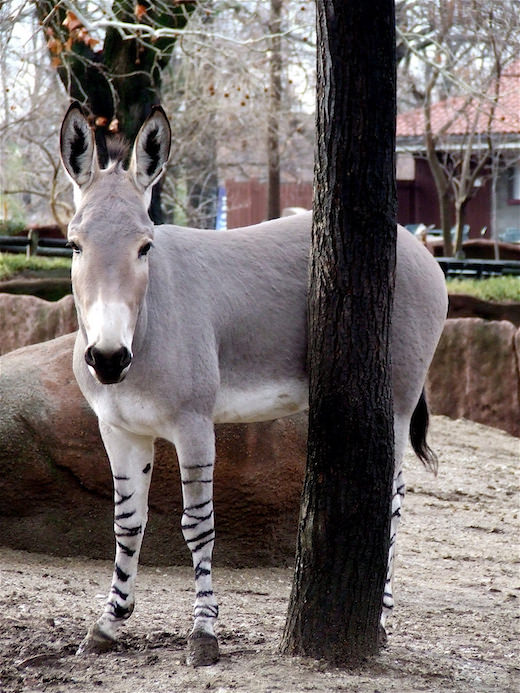African Wild Ass

Critically endangered
The African Wild Ass greatly resembles a donkey and is actually thought to be one of its descendants. The creature stands at around 1.45 metres in height and in length is just under 6 and a half feet. The coat of the African Wild Ass is short just like that of a donkey but is smooth with a colour range from fawn to light grey which breaks into a white colour underneath on the stomach area and inner sides of the legs. All of the creatures have at least one stripe, in those that are Nubian this stripe lies across the shoulder; whereas the Somali kind has the stripe on the legs. These stripes are similar to those of a zebra. Just like a donkey, the creatures ears are large, but have black margins and the tail is finished with brush like ends. The average weight of the creature is between 510 and 610lb.
The environment that the African Wild Ass’ thrive in are either desert or partial desert. They have stomachs that can easily handle the vegetation that grows in this warm dry environment and are also able to extract fluid efficiently. They don’t need to have water regularly which also helps them to survive their living conditions as do the larger than average ears which help them to hear predators and keep cool. Except those that are tending to their young, the creatures tend to live a life that is separate which helps ensure all have access to available food. Although living apart, they are not unsociable and still stay in contact with others of the same species by using their extremely loud voices.
Population Distribution
The African Wild Ass lives in the desert areas of Ethiopia, Africa and Somalia. They once lived in Egypt and surrounding areas too but many have now died out. Of the 570 known to be alive in the wild around 400 are located in Eritrea. In Ethiopia there are thought to be less than 160 and Somalia has only 10! There are 150 that are in captivity and of them 10 have been bred there.
Threats
There are a few reasons this species has declined in population, the first being that it was used for domestication for hundreds of years. Another reason for the decline is the interbreeding of both wild and domesticated creatures. In Somalia and Ethiopia they have been hunted and still are as there bones are used for medicinal purposes and food. With supplies of food for the African Wild Ass being low there is always competition for between them and domesticated animals. Water is in low supply so is often used for agriculture making it harder for the animals to stay hydrated in the heat.
There is protection in place to stop the animals from being hunted but the enforcement of these protection policies are not always adhered to which is contributing to the species decline in population. The African wild ass is legally protected in the countries where it is currently found, although these measures often prove difficult to enforce. Due to the animals resilience if the protection is followed the African Wild ass need not face extinction.